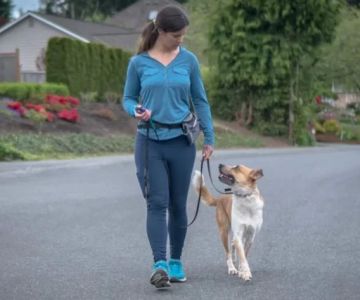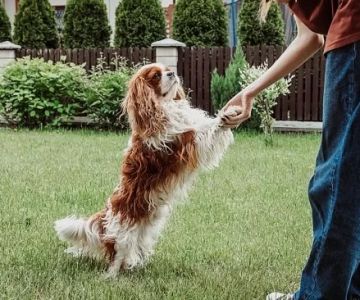- 1 - #understanding-pack-dynamics-in-multi-dog-homes - Understanding Pack Dynamics in Multi-Dog Homes
- 2 - #creating-balance-and-routine - Creating Balance and Routine
- 3 - #introducing-new-dogs-safely - Introducing New Dogs Safely
- 4 - #training-techniques-for-harmony - Training Techniques for Harmony
- 5 - #preventing-common-behavior-problems - Preventing Common Behavior Problems
- 6 - #real-life-cases-of-successful-multi-dog-training - Real-Life Cases of Successful Multi-Dog Training
- 7 - #when-to-seek-professional-help - When to Seek Professional Help
1. Understanding Pack Dynamics in Multi-Dog Homes
Living with multiple dogs can be incredibly rewarding—but it also requires careful management and understanding of canine social behavior. In multi-dog homes, dogs naturally form hierarchies and social structures similar to pack dynamics seen in the wild. Recognizing this is the first step in learning how to train dogs to behave in multi-dog homes.
1.1 Recognizing Dominance and Submission
Every household has a “leader,” but it doesn’t always have to be a specific dog—it should be you. Dogs thrive under consistent leadership. When they know who’s in charge, conflicts decrease and cooperation increases. You might notice that one dog eats first or claims the couch, but with proper structure, this behavior remains manageable and respectful.
1.2 Reading Canine Body Language
Understanding signals like tail position, ear movement, and play bows helps you anticipate tension or discomfort. For instance, prolonged staring or stiff body posture often signals dominance challenges. Intervening calmly before aggression escalates is key to maintaining harmony among dogs.
2. Creating Balance and Routine
Dogs thrive on structure. A predictable daily routine reduces anxiety and helps your dogs feel secure. Feeding, walking, and training at the same times each day allows them to understand expectations and minimize chaos.
2.1 Equal Attention Matters
Favoritism can quickly breed jealousy. Give each dog one-on-one attention through play, walks, or short training sessions. This not only strengthens individual bonds but also reinforces your role as a fair and consistent leader.
2.2 Feeding Time Rules
Feeding time is often when competition emerges. Establish feeding zones and supervise until everyone finishes. If one dog tends to guard food, feed them in separate areas. Over time, consistent rules prevent resource guarding and reduce tension.
3. Introducing New Dogs Safely
Bringing a new dog into a home with established pets can be tricky. The process requires patience and understanding of both personalities involved. The goal is to create a smooth transition without triggering territorial behavior.
3.1 Neutral Territory Introductions
Always introduce dogs on neutral ground—like a park or open yard—before bringing the newcomer inside. This avoids territorial defensiveness. Allow them to sniff and interact at their own pace while keeping leashes loose to prevent tension.
3.2 Gradual Integration at Home
Once inside, limit interactions to short, positive sessions. Use baby gates or playpens to allow safe visual contact. Gradual exposure helps both dogs adjust while you monitor for signs of stress or excitement. Remember, calm introductions set the tone for future harmony.
4. Training Techniques for Harmony
Training is the foundation for peaceful coexistence in multi-dog households. Dogs look for guidance, and consistent, fair rules create trust and respect among all pack members.
4.1 Teach Individual Obedience First
Before group training, each dog must master basic commands like “sit,” “stay,” and “come.” Once they respond reliably, you can move to group exercises. This prevents confusion and ensures each dog understands your cues.
4.2 Group Training Sessions
Start with calm, low-energy environments. Reward good behavior when all dogs follow commands together. Over time, they’ll associate cooperation with positive outcomes. Patience and consistency are key—avoid punishing mistakes, as this may lead to tension among dogs.
4.3 Managing Playtime and Energy Levels
Playtime can easily turn from fun to chaos. Establish boundaries for rough play and step in when it gets too intense. Mixing dogs of vastly different energy levels requires supervision—an older dog may not appreciate a young pup’s constant enthusiasm.
5. Preventing Common Behavior Problems
Even well-trained dogs can experience occasional disputes. Recognizing and addressing issues early prevents long-term conflict.
5.1 Resource Guarding
Guarding food, toys, or even people is common in multi-dog homes. Consistent routines, structured feeding, and clear human leadership reduce these behaviors. Always reward sharing and calm interactions to reinforce positive associations.
5.2 Territorial Aggression
If your dogs become territorial over certain rooms or furniture, temporarily restrict access and reintroduce those areas gradually. Praise calm behavior and redirect energy toward training exercises or outdoor play.
5.3 Overstimulation and Stress
Too much excitement can trigger misbehavior. Create quiet zones where dogs can retreat and recharge. Stress management is essential—just like people, dogs need downtime to maintain emotional balance.
6. Real-Life Cases of Successful Multi-Dog Training
Take the example of a household in Texas that adopted a second rescue dog, Daisy, into a home already ruled by Max, a senior Labrador. At first, Daisy’s energy overwhelmed Max, leading to constant barking and chasing. After a few weeks of guided introductions, structured walks, and training with professional help, the two became inseparable. The transformation showed how patience and consistency can create harmony even in challenging multi-dog homes.
6.1 Lessons from Real Pet Owners
Many families share similar stories—initial tension, careful supervision, and eventual friendship. The most successful cases share one theme: commitment. With the right strategy, even dogs with different temperaments can learn to live together peacefully.
7. When to Seek Professional Help
Sometimes, even with your best efforts, conflicts persist. Signs such as repeated fights, excessive anxiety, or destructive behavior may require expert intervention. Professional trainers or veterinary behaviorists can assess your situation and provide tailored solutions.
7.1 Working with Hidden Brook Veterinary
At Hidden Brook Veterinary, our specialists understand the complexities of multi-dog households. From behavior consultations to personalized training programs, we help families build happier, more balanced homes for their pets. Seeking guidance early can prevent long-term behavioral issues and restore peace within your household.
7.2 Building a Lasting Bond
Learning how to train dogs to behave in multi-dog homes isn’t just about obedience—it’s about connection. With consistent structure, positive reinforcement, and the right professional support, your dogs can live together in harmony and bring endless joy to your life.











